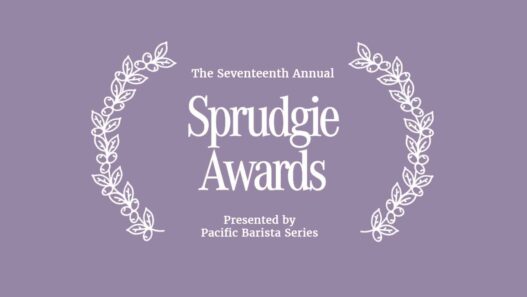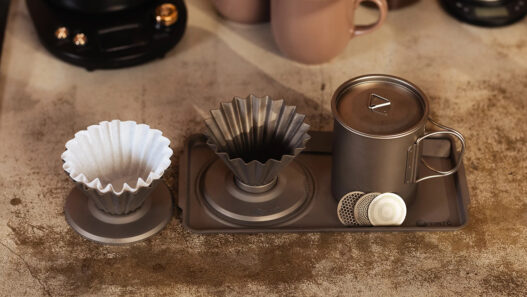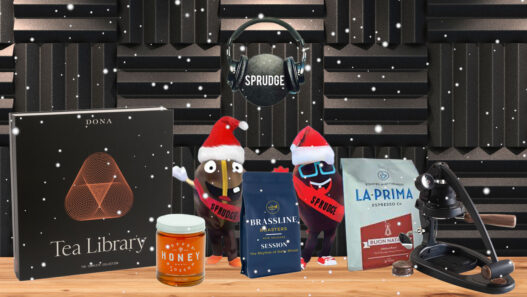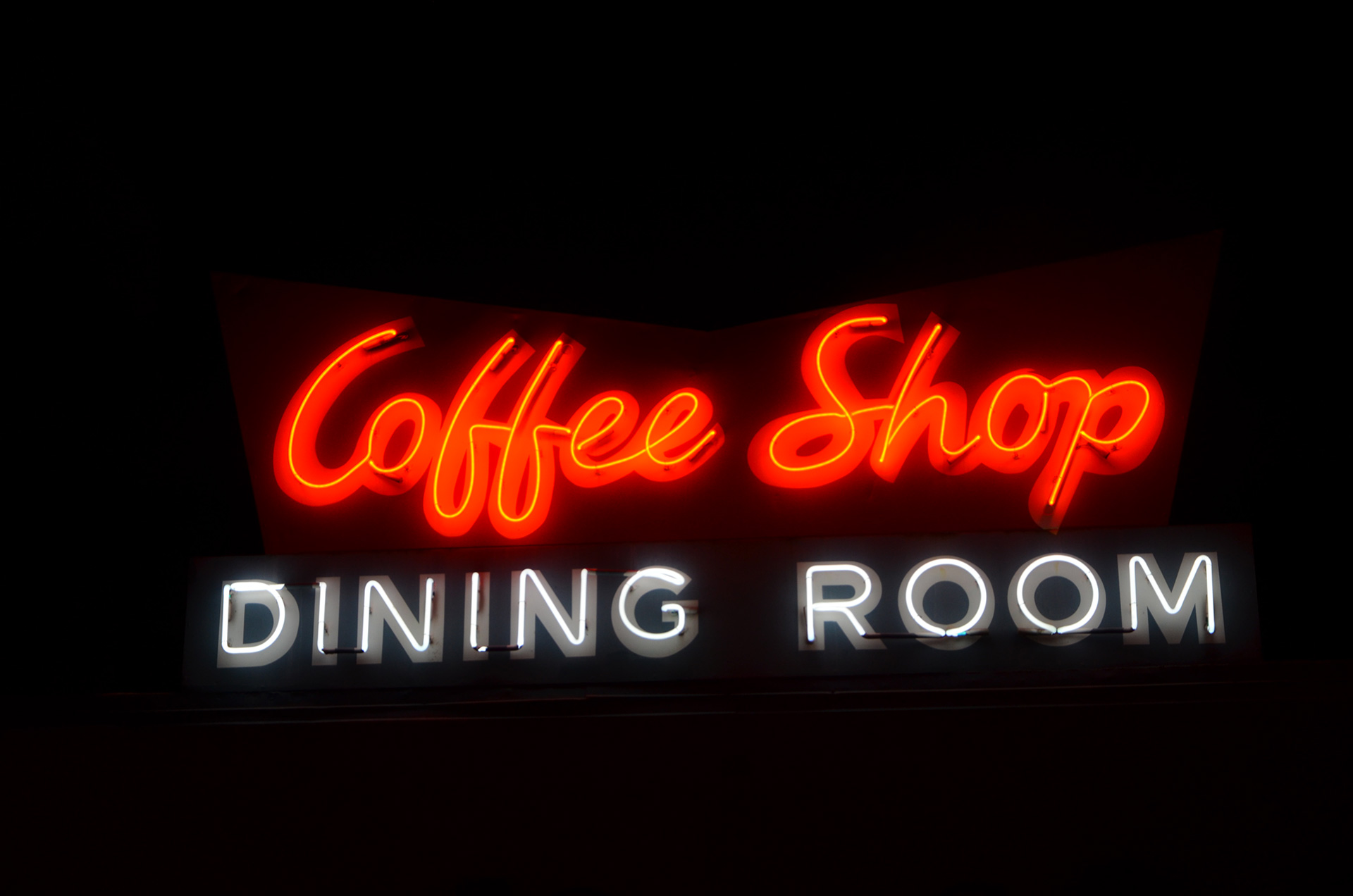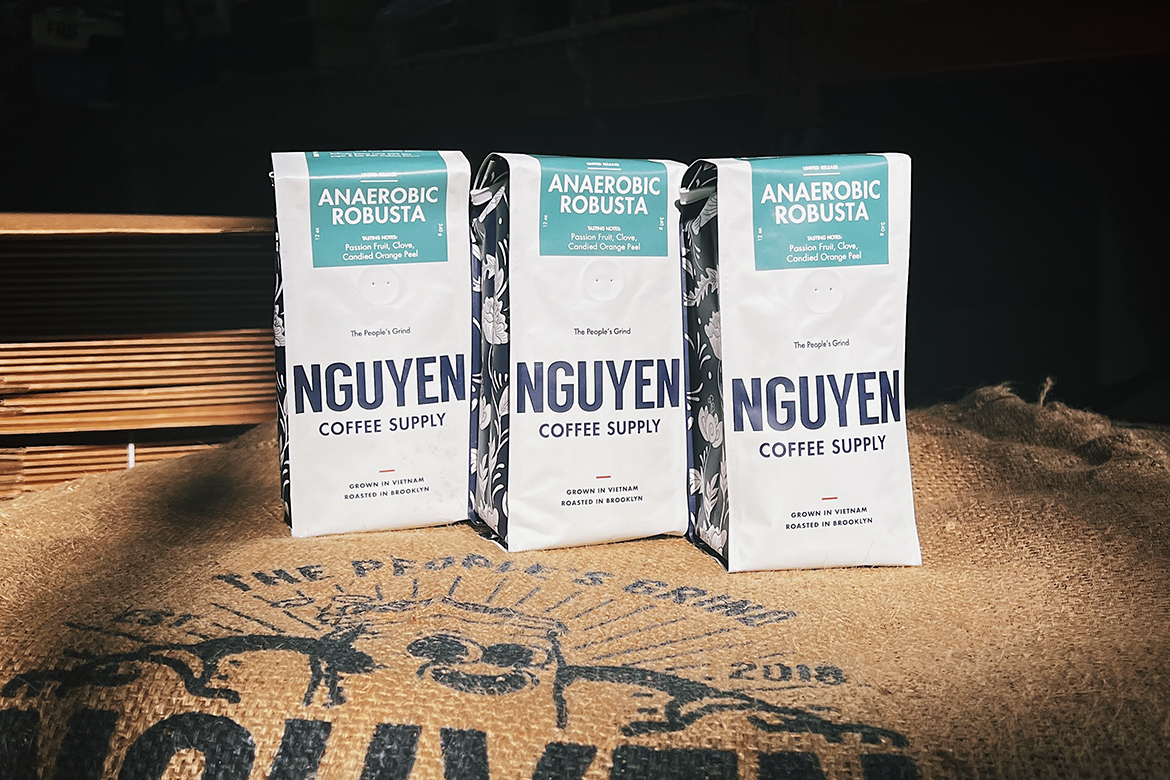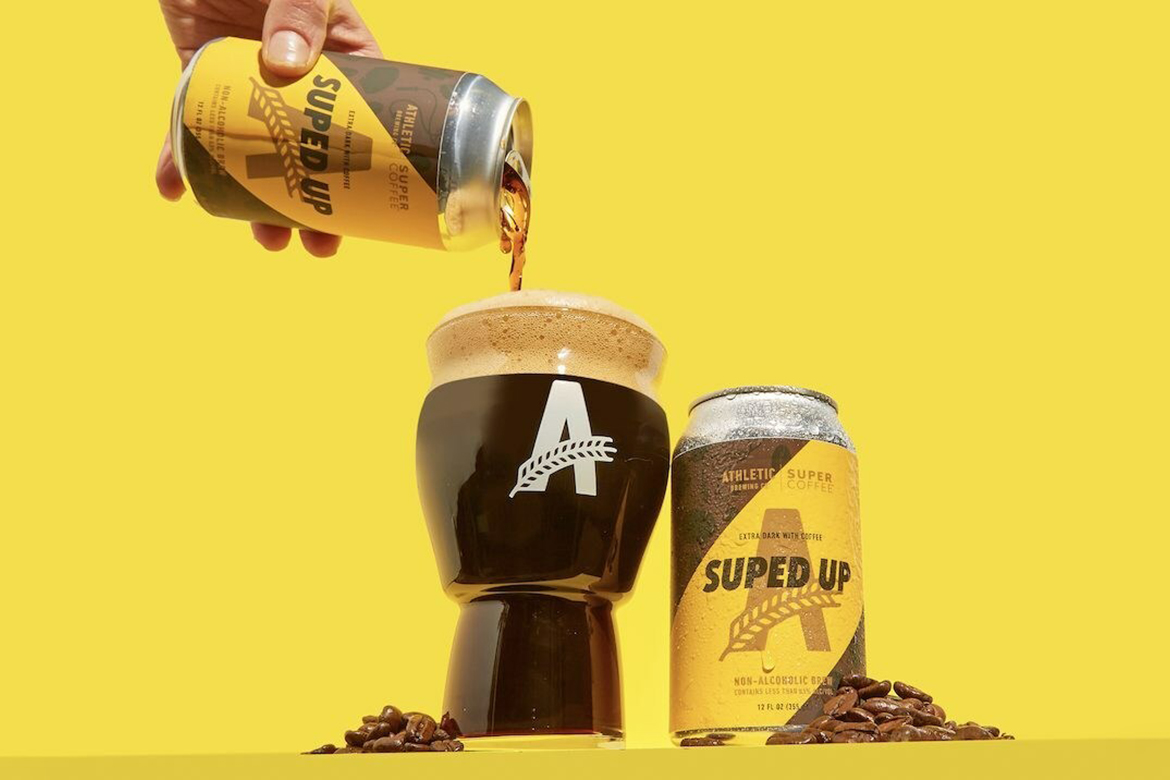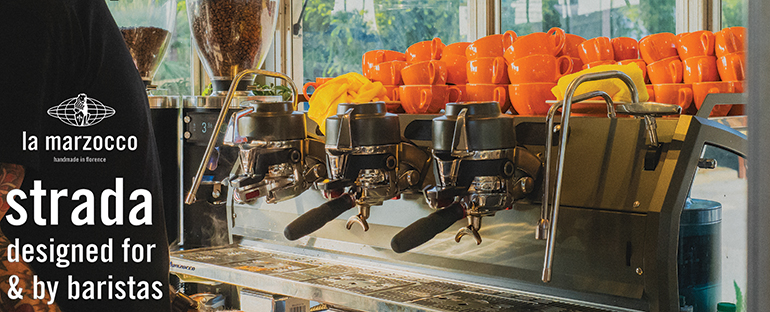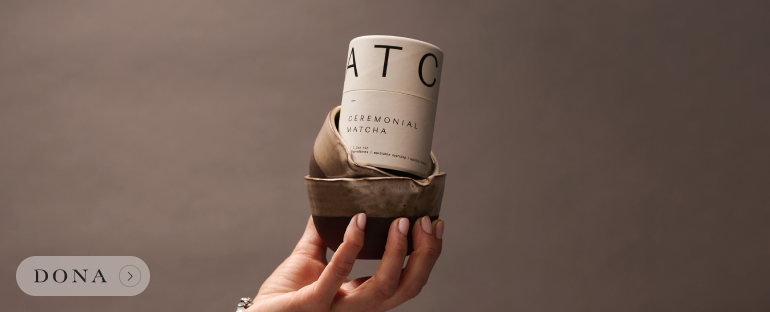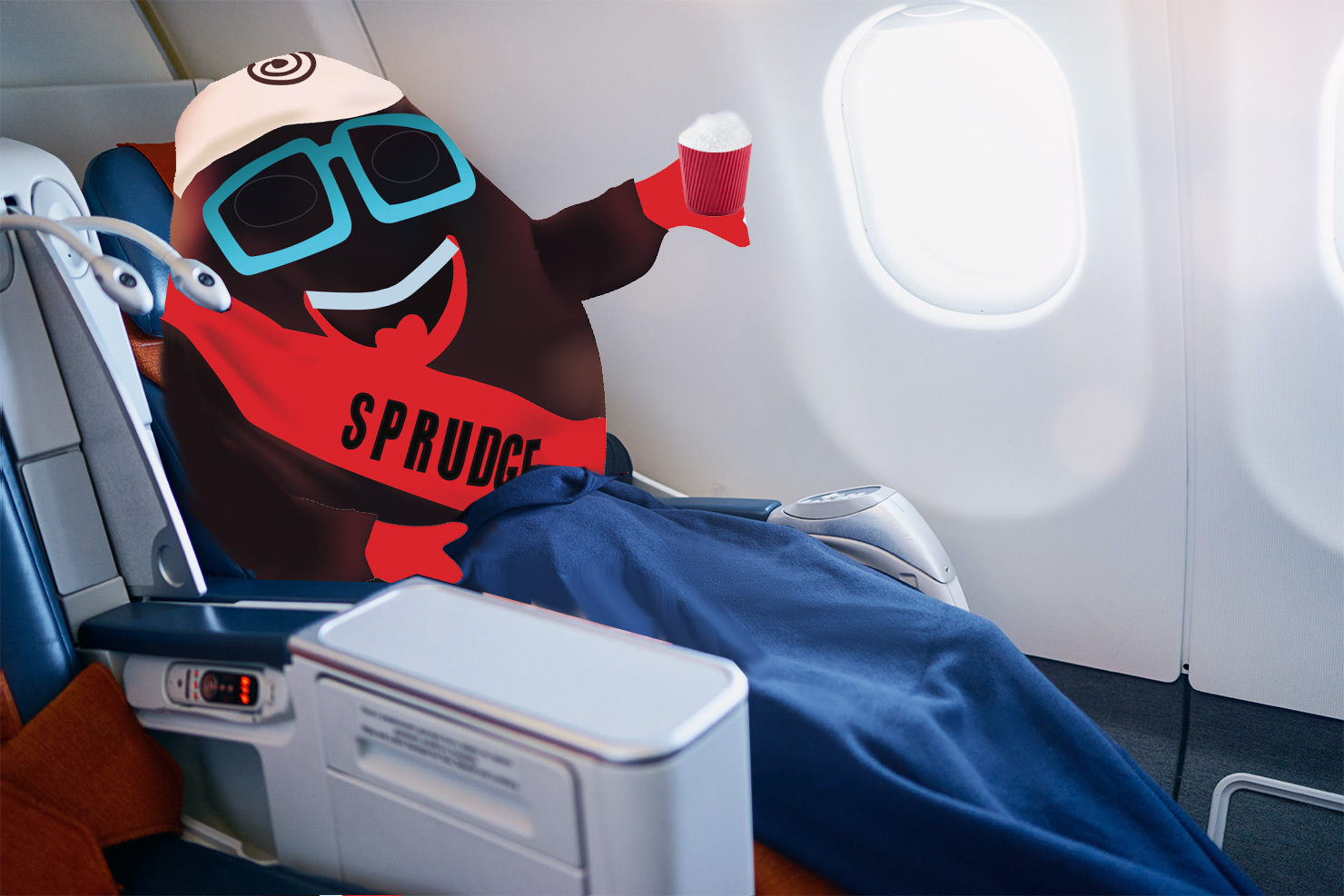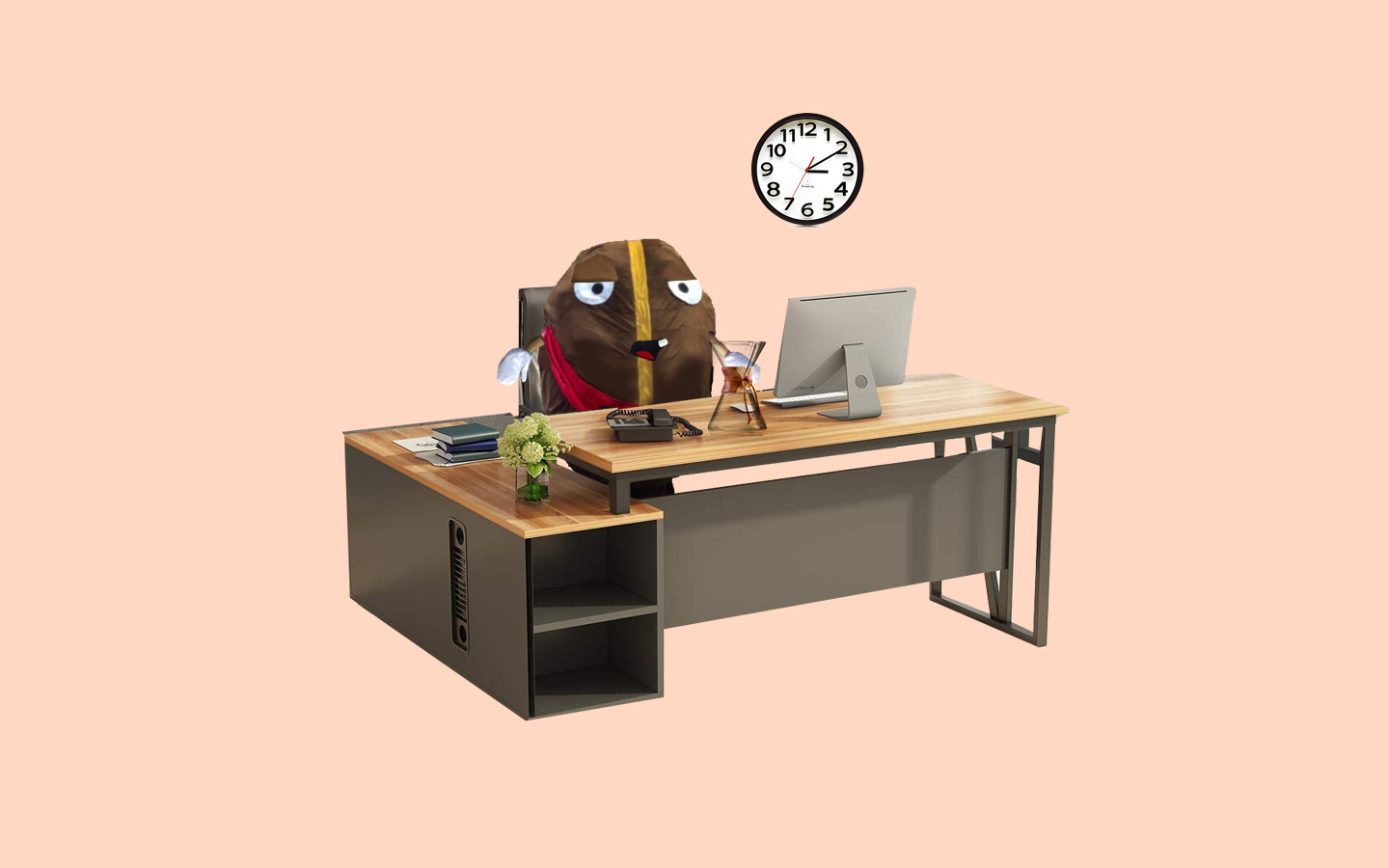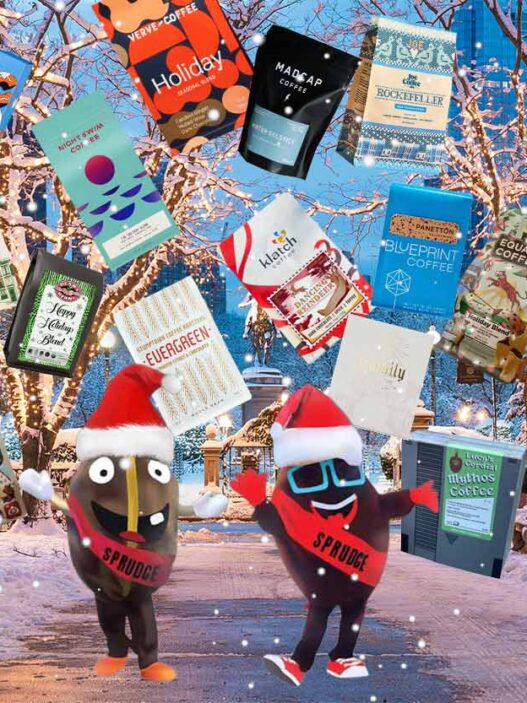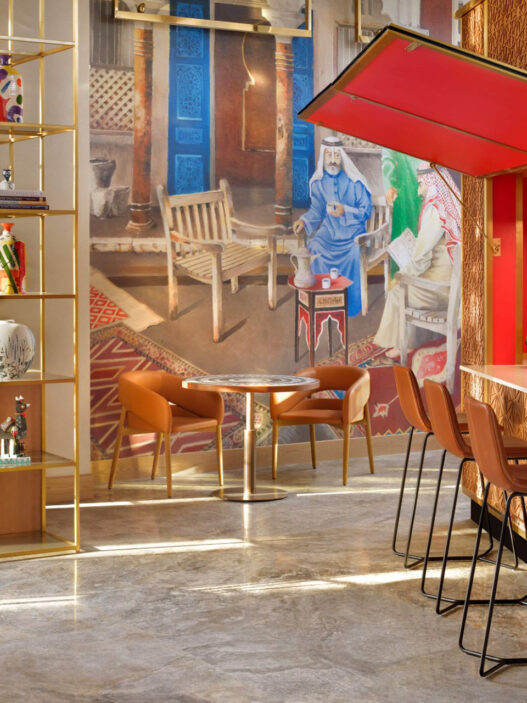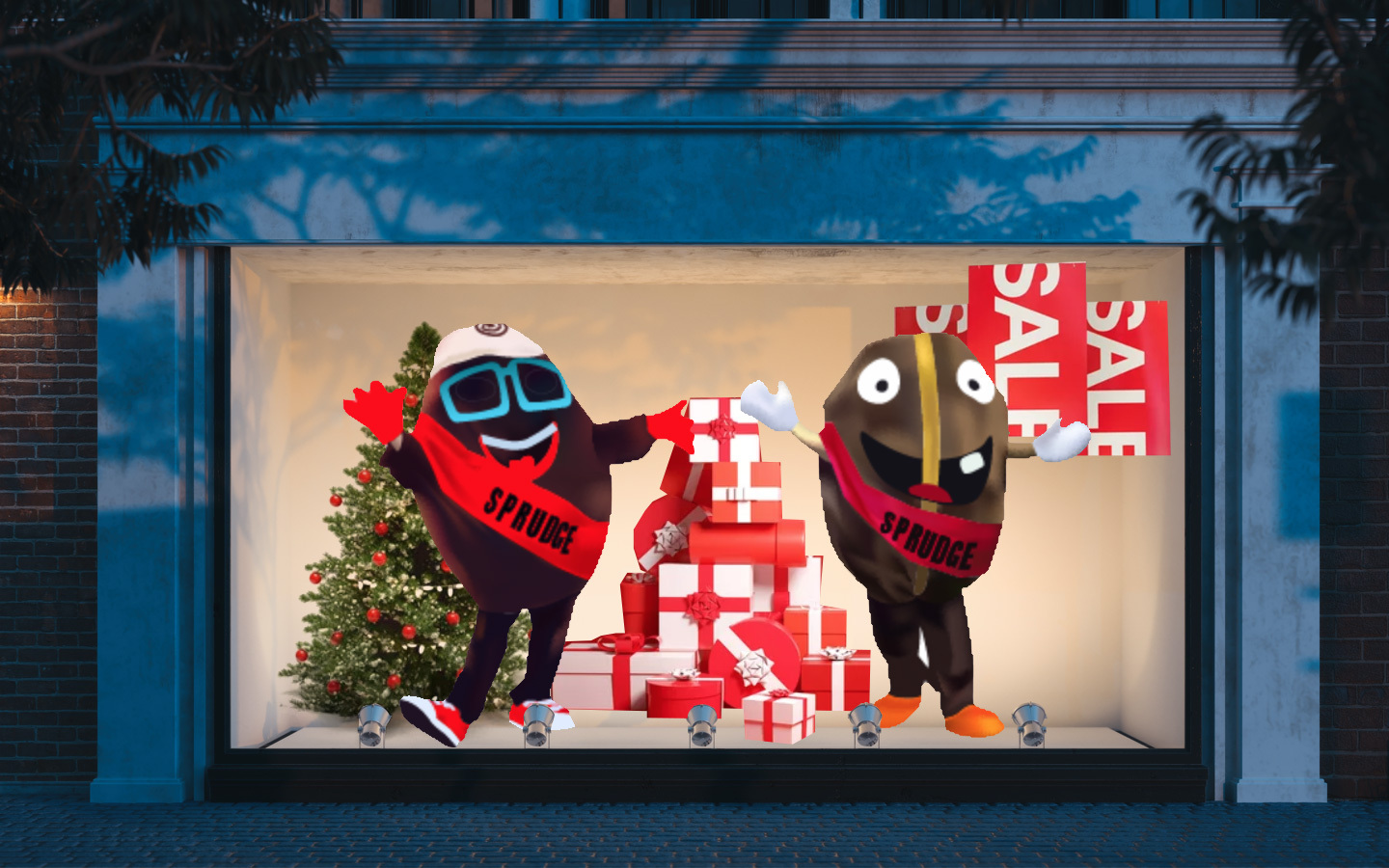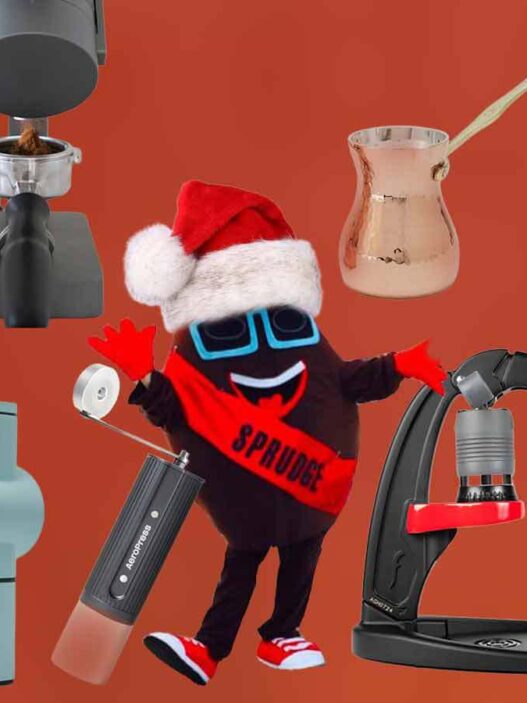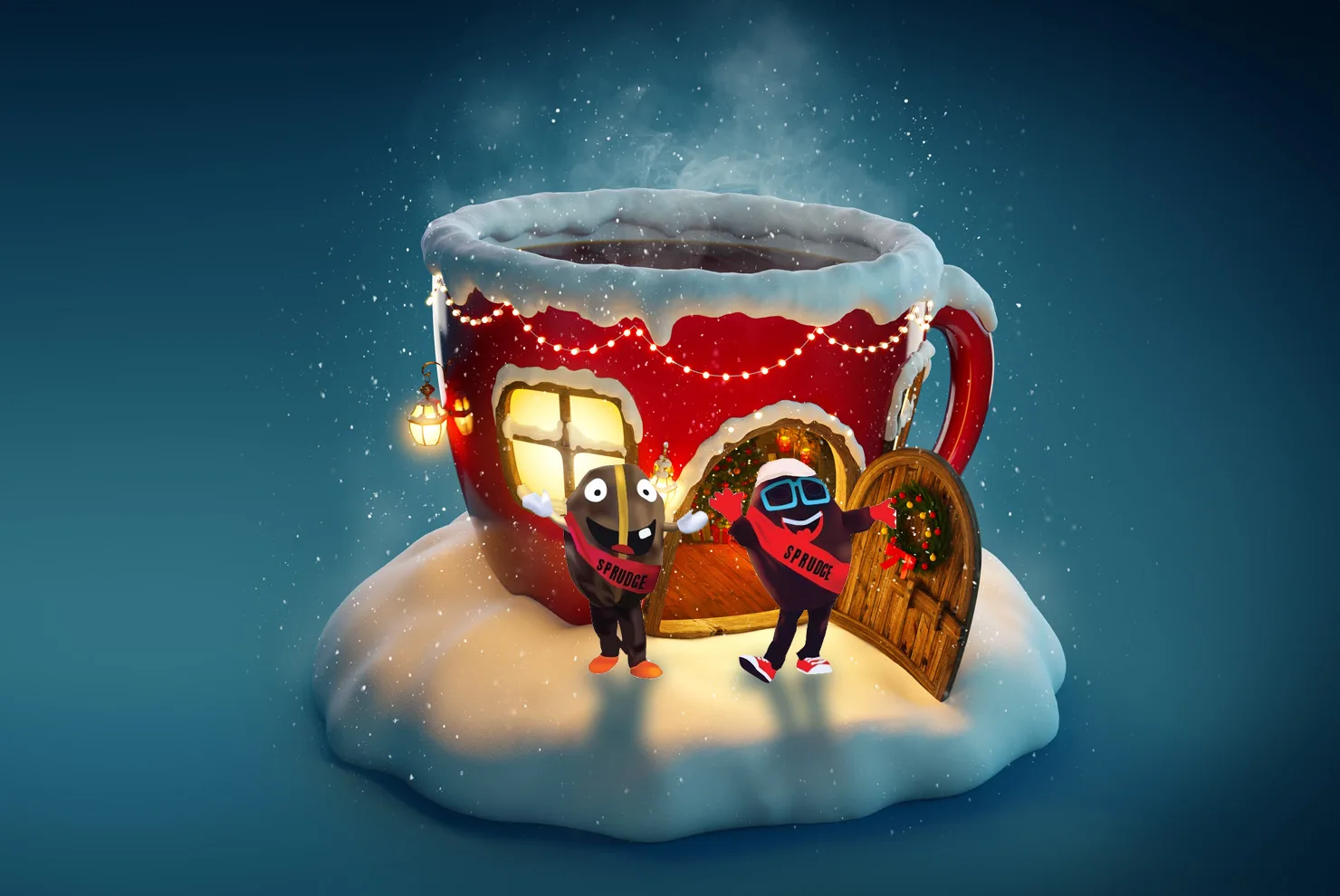Neon and coffee go hand in hand, bathing your favorite cup in a soft glow. Today it’s part of a wider interior design milieu: the living plant wall, a sun-lit corner with dramatic shadows, and a cheeky phrase lit up, curving in an exaggerated script font. But long, long ago—before Instagram, before the permanent daylight of the Las Vegas Strip, and before enormous digital screens took up residence in Times Square—there were illuminated tubes and coffee mugs to light the way.
Neon signs’ peak in the 1950s went hand-in-hand with the promotion of automobile usage and a need to grab people’s attention faster. It was often paired with roadside architecture structures like giant coffee pots and other similarly eye-catching buildings. The previous iteration of lit signs—words made up of single bulbs dotted to form letters—took the brain a moment to process. But continuously lit tubes? The lines made it easier and faster for people to read; every second counted regarding business signage on the highways.
These days, neon is seeing revived interest on the walls of newer cafes and increased historic preservation efforts. The number of these historic signs has dwindled dramatically since the ’50s, but a small and passionate group of people are working hard at preserving the signs and their history. And, of course, this history also involves coffee.
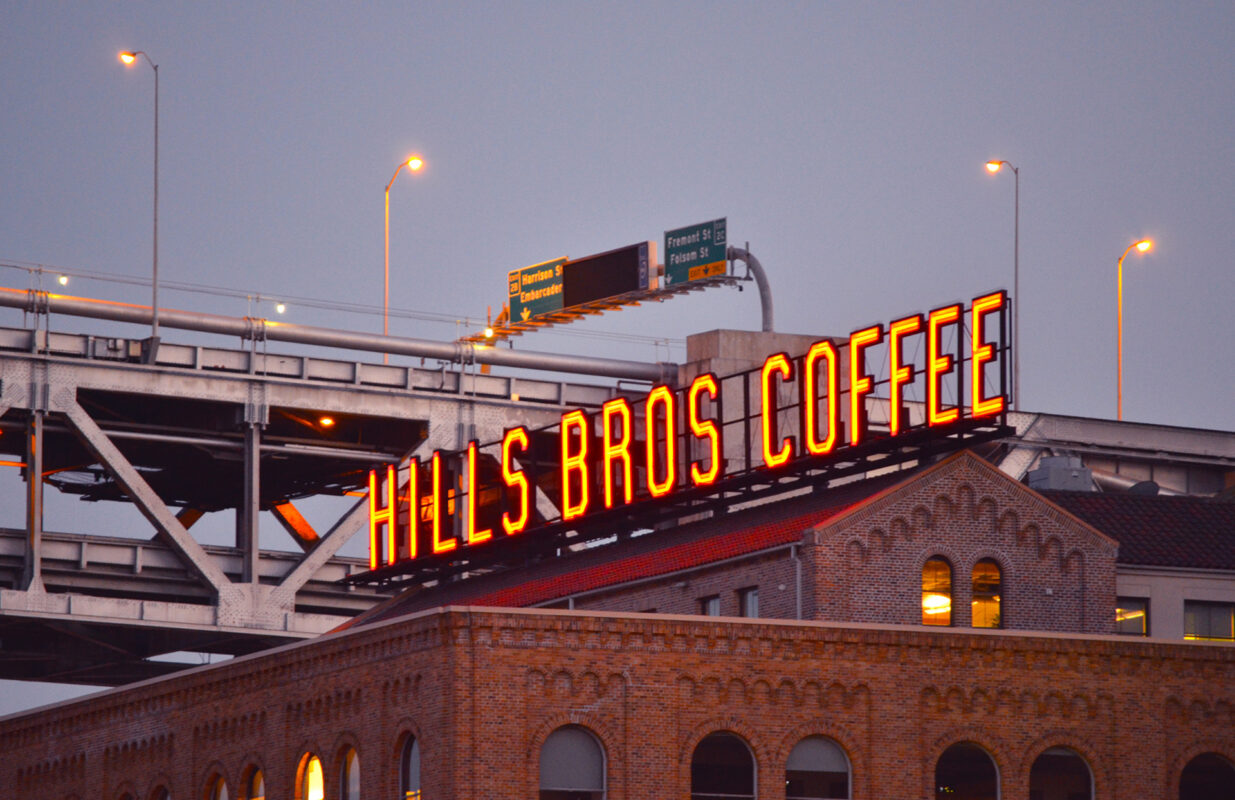
A bright innovation
Let’s rewind. As a gas, neon was discovered but unidentified in 1785 by Henry Cavendish: a minuscule amount of the gas was present after nitrogen and oxygen were removed from atmospheric air. It took another century for neon to be identified as an element, along with other noble gases, by Sir William Ramsay and Morris Travers. At the Paris Art Show in 1910, French industrial chemist Georges Claude produced neon on a large scale, so that when it was inserted into glass tubes and combined with electricity, it would light up. Two years later, he figured out how to bend the glass tubes to form letters, and the first neon sign was created.
It wasn’t until the 1920s, with the promotion of automobiles and road trips in the US, that neon signs began beaming widely from the streets. These signs were a novel idea that evened the advertising playing field between mom-and-pop and large businesses. Previously, billboards and signs to attract customers could only be afforded by larger companies. With neon now available to be bent for signs, sign production was cheaper and more easily accessible. “When they were new, neon signs represented luxury and security,” writes Christoph Ribbat in the book Flickering Light A History of Neon. Ribbat also details a moment in 1933 when a neon sign incorporated coffee in a special way: “Thanks to an advertisement for A&P Coffee, people on the sidewalk could, for the first time, get the real smell of coffee coming out of an artificially steaming gigantic cup.”
“Coffee shops and cafes were early adopters of neon signs because they were trying to get people out of their car and into the shop,” Dydia DeLyser tells me. DeLyser is a cultural-historical geographer at California State University, Fullerton, co-author of Neon: A Light History, and board member at the Museum of Neon Art. Because the roadside cafes didn’t sell expensive food and relied on a lot of traveler traffic, neon worked to grab their attention quickly. She says, “Besides being shaped into words, neon signs also included shapes like a coffee pot or steaming cup of coffee.” Neon was also a worthwhile investment for family businesses because its long-lasting qualities ensured that the sign would live on with future generations.
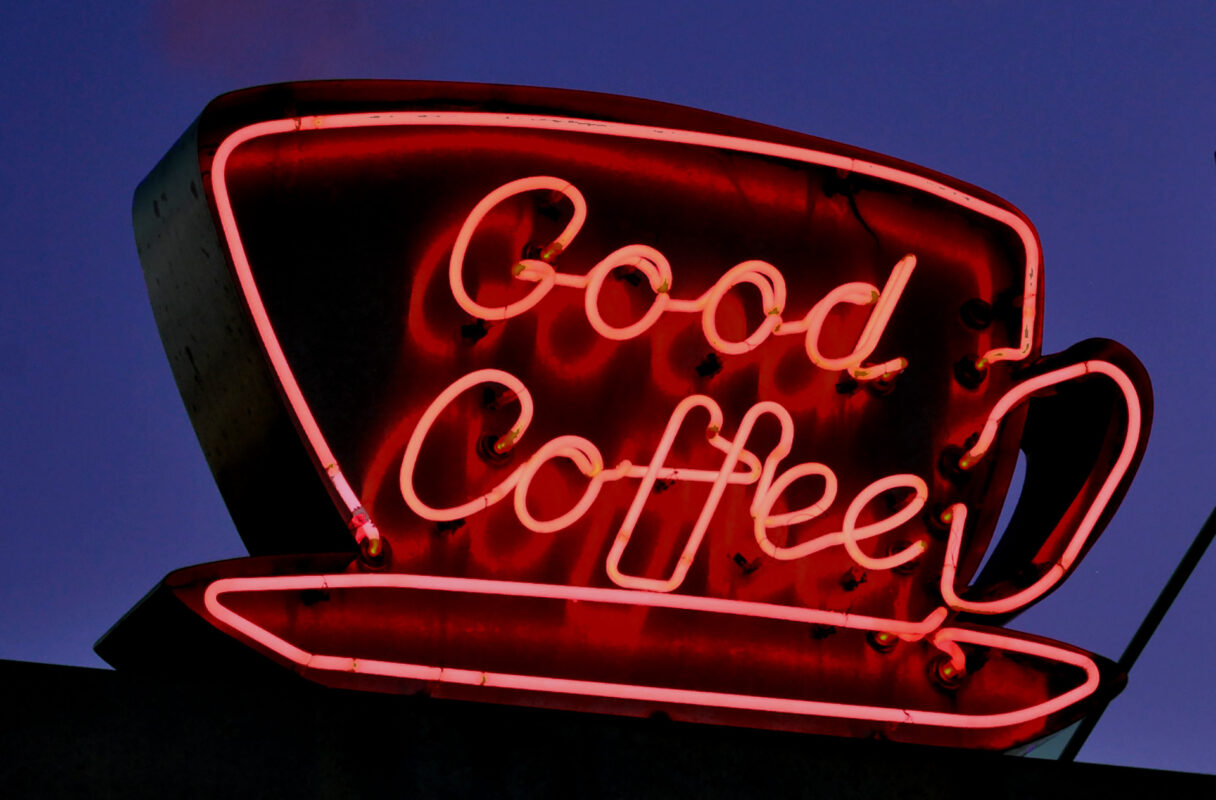
Back then, java joints with “cafe” or “coffee shop” in their name would be what we consider diners today (à la Guy Fieri’s Triple D). But even within this set of coffee shop buildings, some architects had other, more futuristic ideas that often involved neon. And California—specifically, the Los Angeles area—was primed for this with its car culture and available land for drive-ins.
Architects Louis Armet and Eldon Davis designed several thousands of these coffee shops and restaurants, including Bob’s Big Boy and Denny’s, establishing the architectural style that became “Coffee Shop Modern.” Architect and historian Alan Hess describes this in his book Googie Redux: Ultramodern Roadside Architecture: “Coffee Shop Modern balanced the dramatic imagery of both Mesozoic nature and twentieth-century technology. Daring cantilevered roofs poised on rough-hewn stone pylons or battered stone walls rising out of luxuriant vegetation. Space-age plastic fixtures ornamented natural stone walls.” Coffee Shop Modern was part of the larger, dramatic, space-age design period of “Googie” architecture, a style that many critics were not a fan of at the time. Hess notes in the book that these naysayers described the style as “quicky Wrights,” “just facades,” and for roads dotted with it, an “intermittent eyesore.”
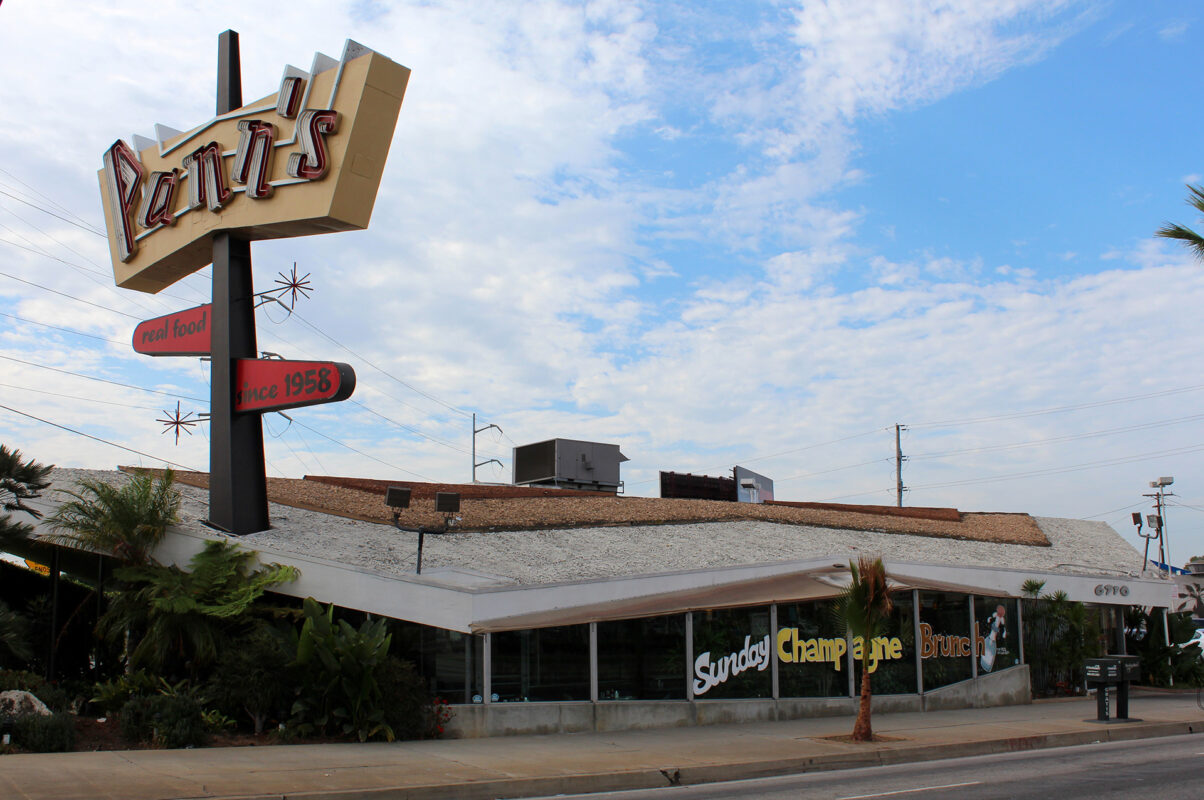
If you are picturing a building out of the Jetsons’ world, minus the floating in space part, you’re not too far off. In fact, it’s entirely possible that the tv show’s architecture was borrowed from the buildings that surrounded the creators in LA.
Incredibly, making a neon sign today is essentially the same process as when the technology was developed in the 1890s. Since the transformers, glass, and gas combinations remain largely unchanged in how they interact, restoration efforts are far easier. Neon signs have “never ever been able to be made by machine. No computer, no robot. It can only be done by hand,” says DeLyser. As long as everything is intact and working, the sign will stay lit. For example, she points to the neon lamp in LA’s Clifton’s Cafeteria that glowed for 77 years behind a wall, only to be found because of a major renovation. The owner estimated that the sign racked up $17,000 in unnecessary electricity bills.
Neon signs are a combination of art, science, and skill: you need all to make a good sign, says DeLyser. “Even after the neon patents expired, the high degree of skill required to properly design and build a neon sign continued to limit the number of sign shops that manufactured them,” writes Charles R. Taylor in a book about on-premise signs for marketing. “That changed following World War II when, funded by the GI Bill, thousands of people learned this skilled trade and spread it around the U.S.” Nowadays, there are neon makers, preservers, schools, museums, and laws, all working to keep neon burning.
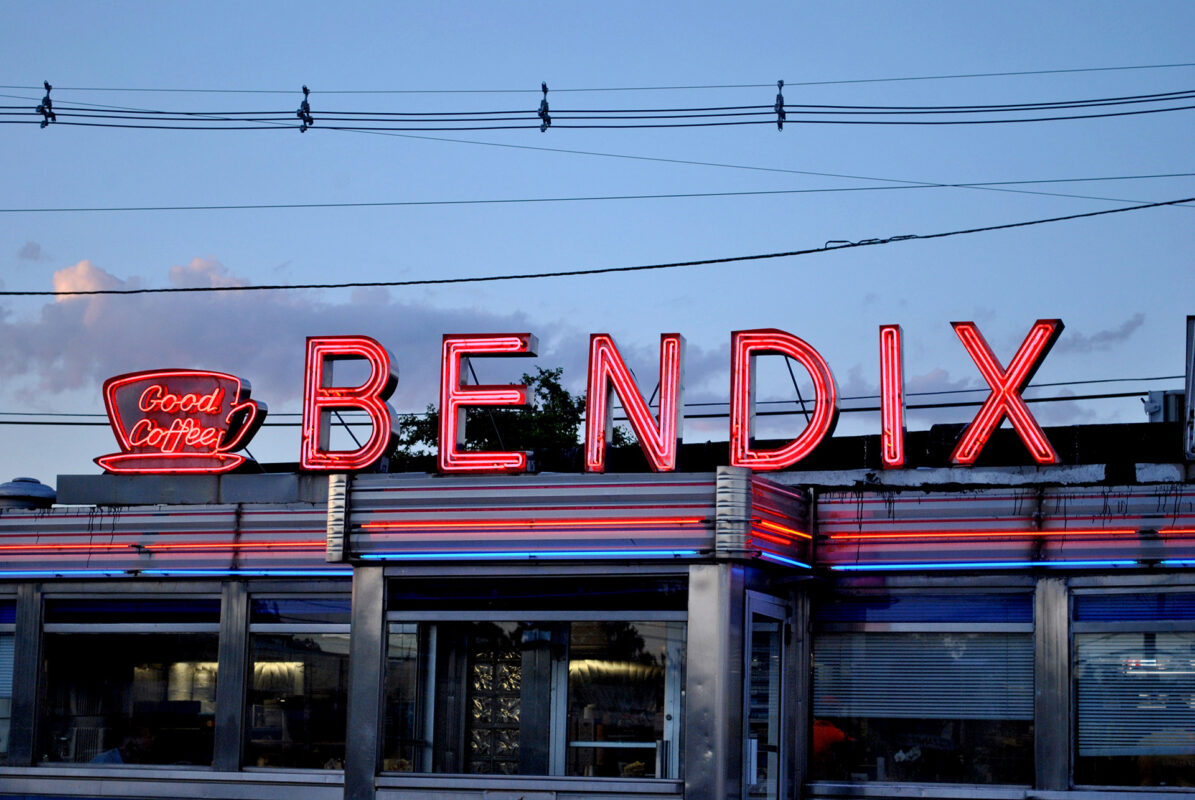
From tacky to historical
The flashiness of neon and Googie architecture eventually became too much. Ribbat writes, “This is the ironic twist in the story of the glowing tubes. They were developed as an element of business technology to advertise hairdressing salons, cinemas, and department stores and boost commercial success. But when they lost the charm of the new, they became a symbol of urban decay, their light shining above all on those looked down upon as losers.” It took the demolition of Ships Coffee, which introduced one of the first automatic coffee makers (the Filtromatic High Volume Coffee Urn) and an excellent example of Googie architecture, to create the Los Angeles Conservancy’s Modern Committee. The Conservancy works to preserve historic architecture and resources in the LA area.
When the preservation movement started in the US, its main purpose was to enshrine the homes of important, historical people. A big challenge in the preservation community, DeLyser tells me, is that “they continue to lag behind in understanding that historic buildings typically had historic signs.” Some signs were afterthoughts, but many were designed for their space and with their building. The Museum of Neon Art uses two committees—sign and art—to evaluate pieces for their historical and cultural merit. There are 183 neon signs archived in its digital collection, along with details of their origin and cultural significance.
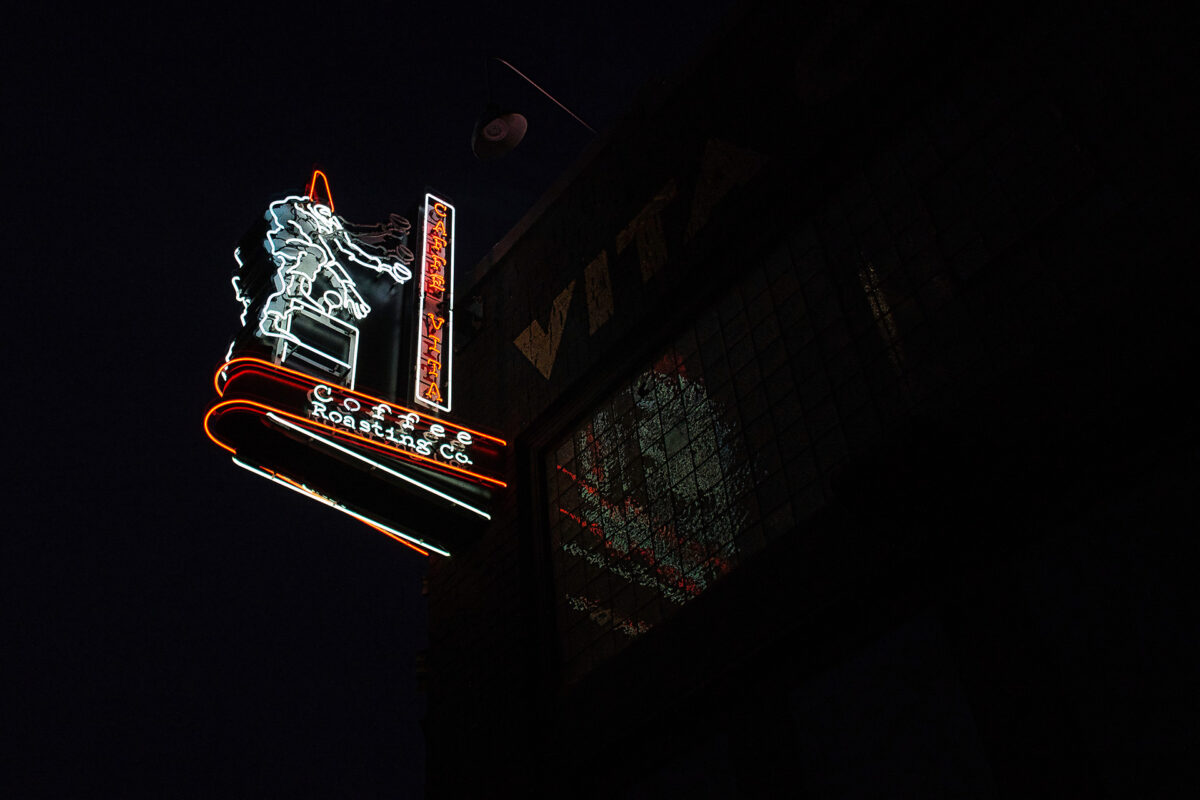
One such sign is from Seattle-based coffee company Caffe Vita Coffee, which donated the sign when its LA location closed. Every location that opened from the company’s start in 1995 until 2020, when it went under new ownership, featured “the 17th-century Italian puppetry character, the Pulcinella” outside in all its neon, moving glory, content manager Nathan Lowe tells me. He says, “The neon signs are easily recognizable by those who have grown up around the Seattle specialty coffee scene, and they’re beloved by our customers, as well as artists and street photographers.” Lowe doesn’t know why the neon signs were installed at each location, but he explains that the Capitol Hill cafe used to be open up until midnight and would be a beacon for the nightlife people “to know that our cafe was open as a third place for those who sought for one.”
In the past few decades, preservation efforts have amped up on including signs with the buildings. Recent renovations include Pann’s in LA, Paris Coffee Shop in Fort Worth (whose sign’s interior was found to be “extremely fragile”), and Formosa Cafe in West Hollywood (a $2.4 million restoration).
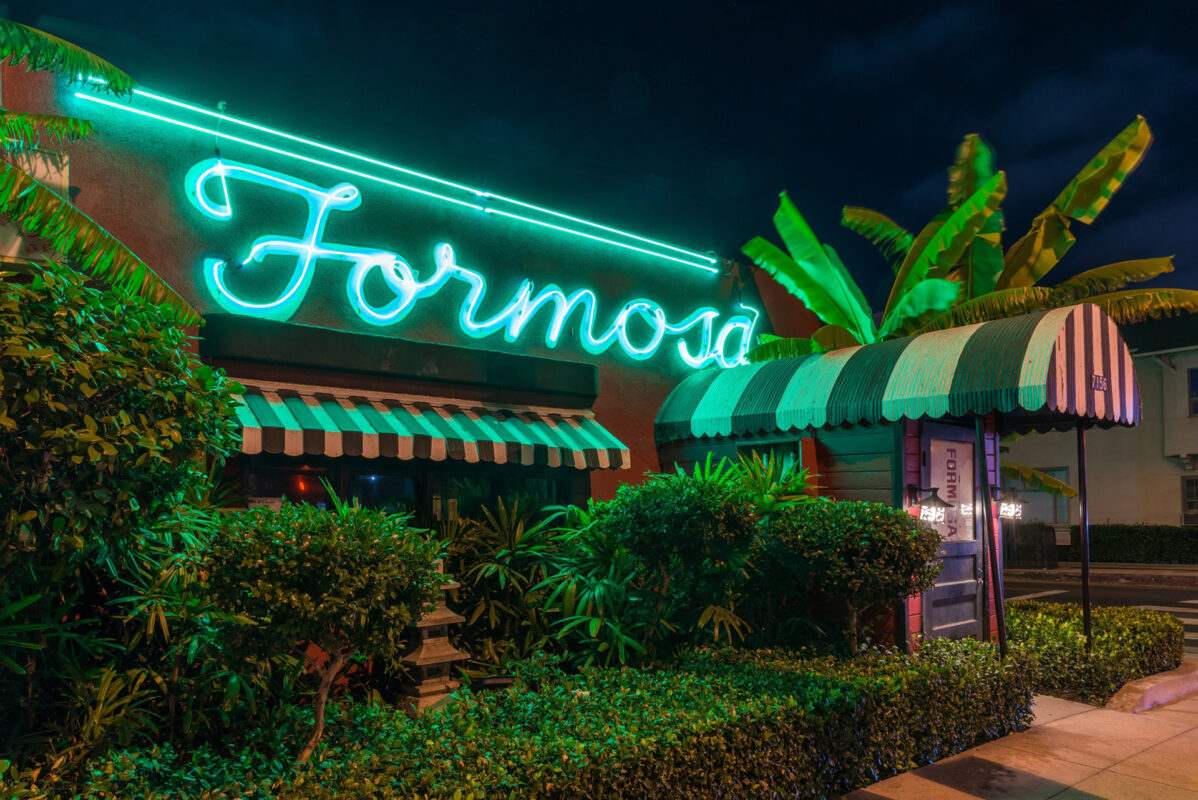
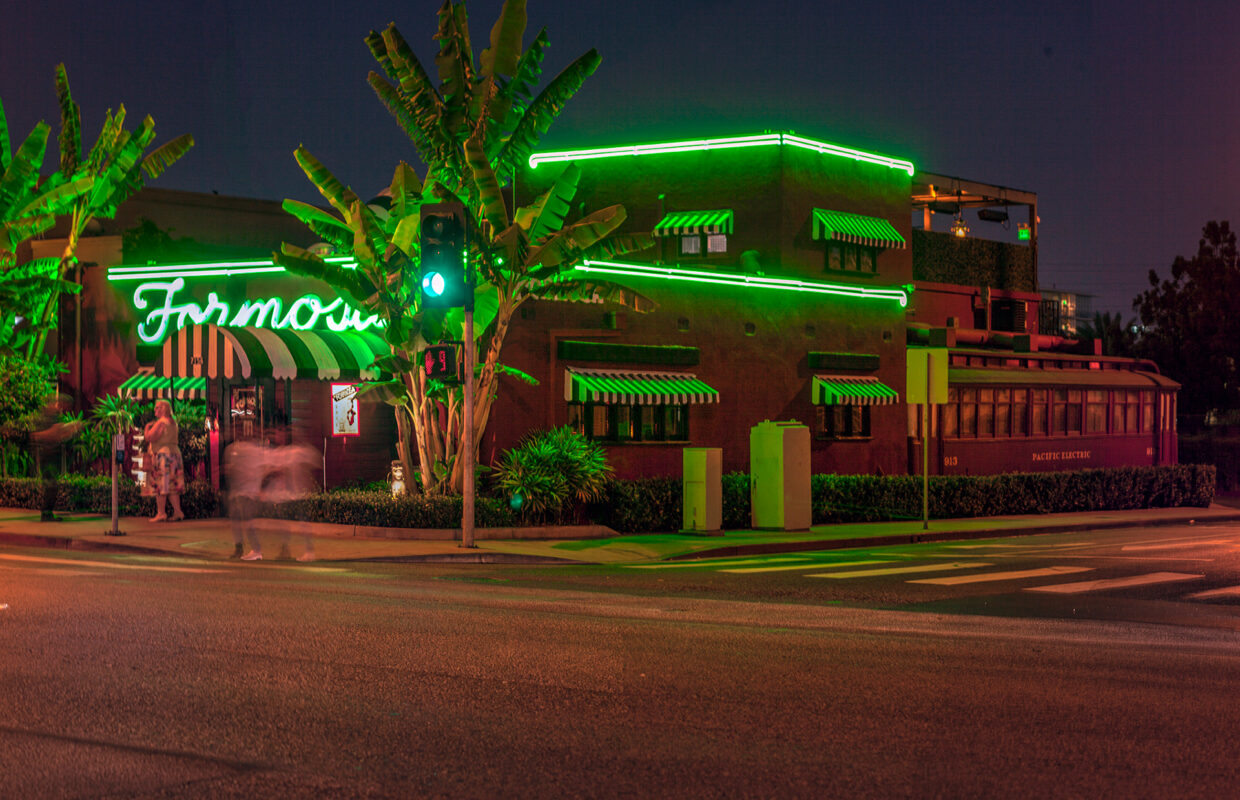
“The same way you would see a font in lettering or a color combination that instantly identifies itself to a certain time, the neon is just as important to the building as the architecture itself,” explains Bobby Green, co-owner and designer of 1933 Group, the hospitality group that owns The Formosa. The restaurant’s exterior is lined in green neon and features an impossible-to-miss scripted sign.
Green shared what goes on behind a sign restoration. First, you check the glass to see if it works. If it doesn’t, you look at the power source or transformer, cracks in the glass, and wiring. These are all done for “the importance of using as much originality to the sign as possible. Depending on how old the glass and gases inside are, you may not be able to get a perfect color match with new glass,” he says. Next is the sign can, whose paint can be stripped back, repainted, and/or retouched. The process is lengthy and requires a skilled craftsperson to execute it.
If desired, you can restore an entire sign to make it like-new by recreating the glass tubing from a pattern, stripping the sign to bare metal, and repainting it in its original colors, says DeLyser. A neon sign made in the 1920s was likely either red or blue in clear glass tubing. More colors arrived later, often reflecting the color trends of automobiles.
“Anything that’s still on a building is worth saving, as long as the pigeons have not nested,” says Randall Ann Homan, co-founder of San Francisco Neon & Preservation Organization, sharing that pigeon guano can be destructive and difficult to restore from. Homan continues, “We like to say that neon signs are like sponges. They just soak up history and culture and meaning and become neighborhood landmarks.” Homan, along with her husband and co-founder Al Barna, lead neon sign walking tours in San Francisco and tirelessly work to preserve historic neon signs in the area. They shared photos with me of nearby coffee signs: Hill’s Brothers, Lafayette Coffee Shop (the building owner kept the sign but the cafe had to move), and Hansen Good Coffee’s percolator. Pro tip from Barna, who’s a photographer: take the photos at twilight for the optimal visual combination of sign and neon.
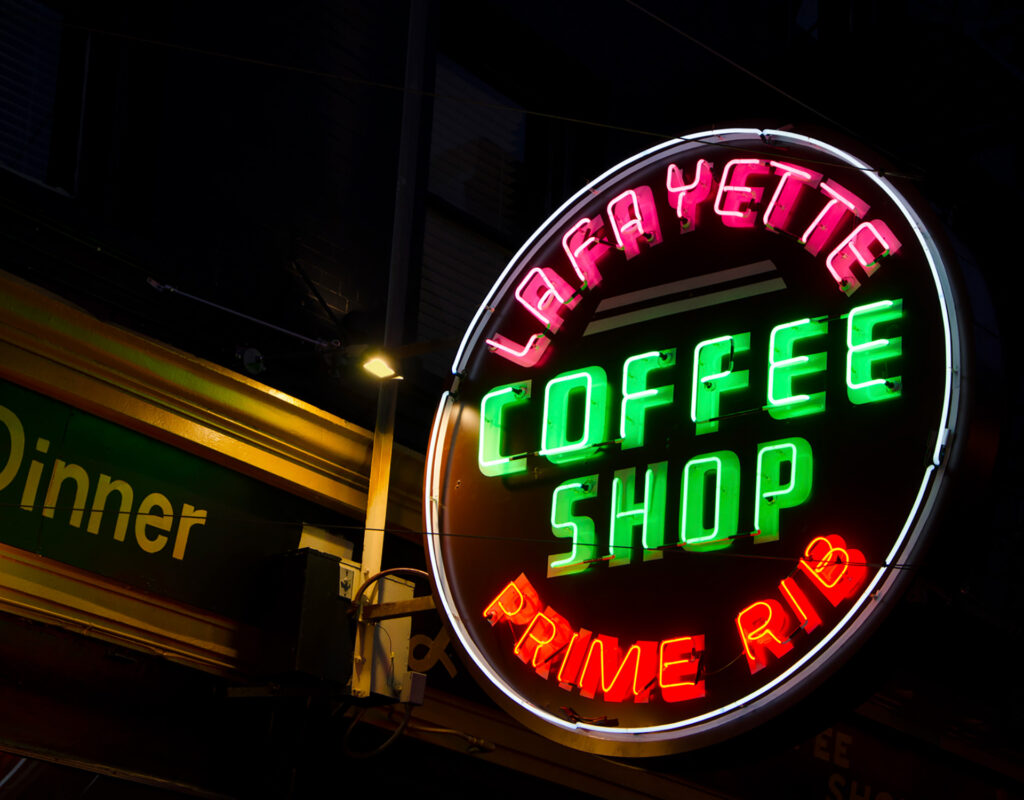
“It’s a very active kind of light,” explains Homan on why she is so drawn to neon. “It’s a light that you can see literally from miles away, or you can stand right next to it, and it won’t hurt your eyes.” Even when mounted inside, the light will shine brightly and illuminate darkened sidewalks. On why he thinks neon is becoming popular again, Barna says, “Everything in the neon sign is recyclable, whereas that’s not necessarily true with LED signs.” And, the selfie aspect (“neon looks really great in a selfie”).
Homan and Barna advise that the best way to keep neon glowing is to engage with it: be a customer and tell the workers inside that you entered because of the sign. But first, take a photo.
Jenn Chen (@thejennchen) is an Editor At Large at Sprudge Media Network. Read more Jenn Chen on Sprudge.




